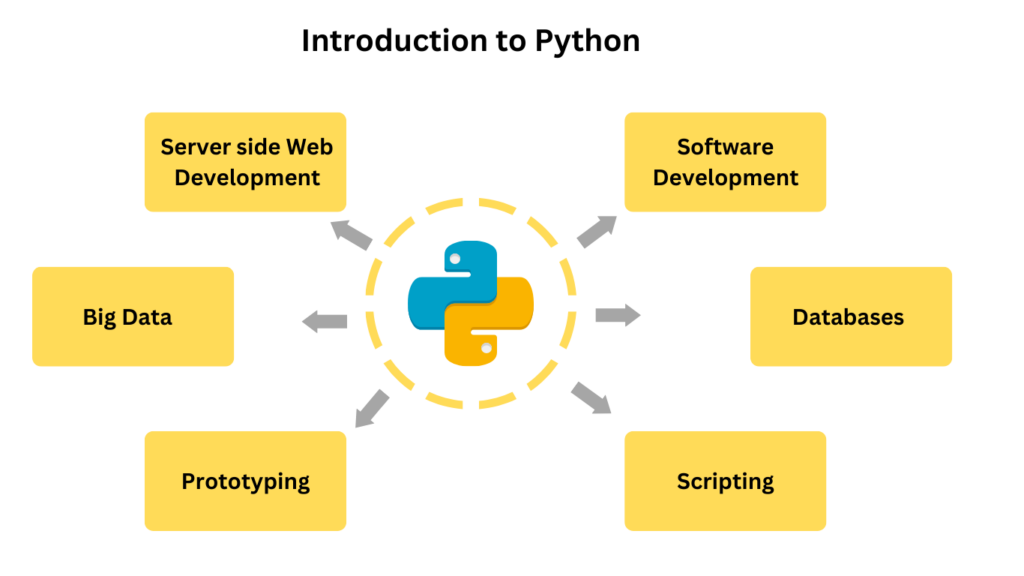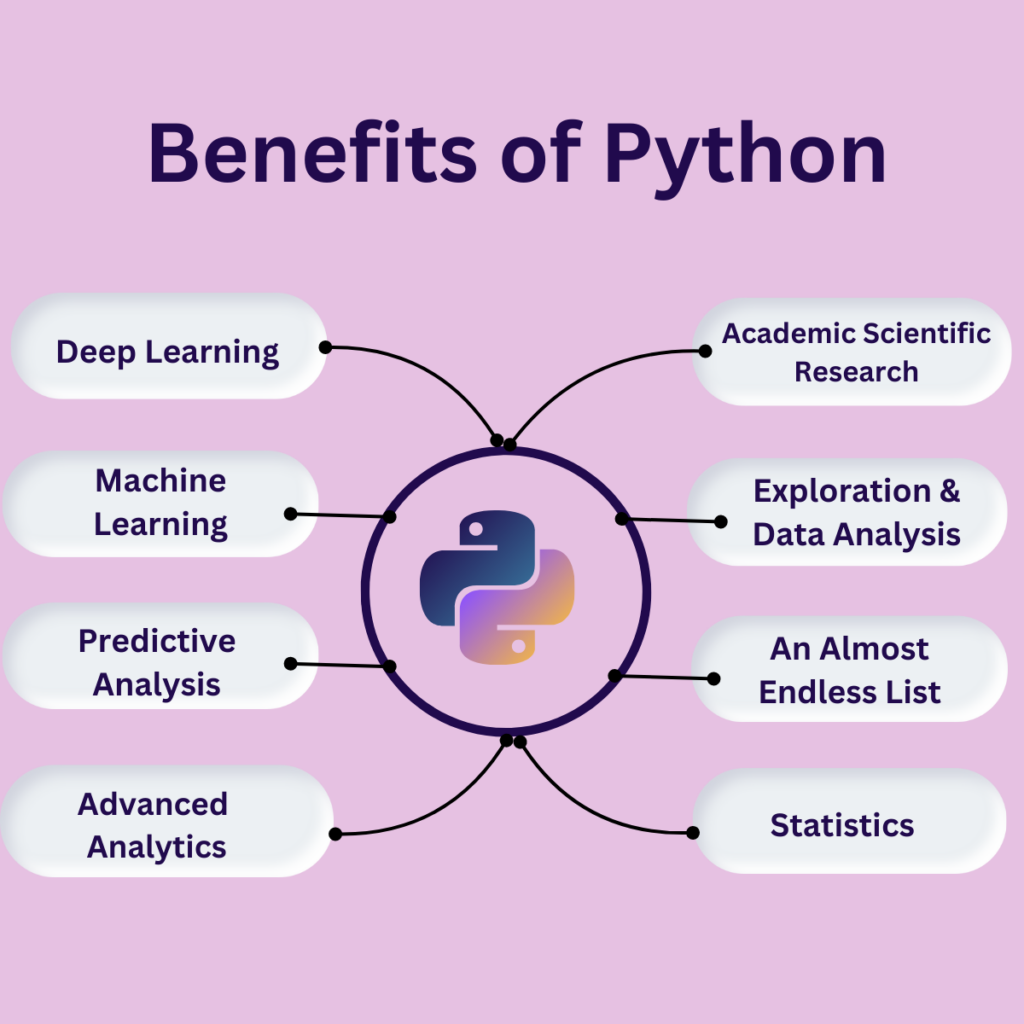Python
Home > Page
Introduction to Python
Python is a high-level, interpreted programming language that was created by Guido van Rossum and first released in 1991. It is designed to be easy to read and simple to implement, making it an ideal language for beginners and experienced programmers alike. Python’s design philosophy emphasizes code readability, using significant indentation and a syntax that allows programmers to express concepts in fewer lines of code compared to languages like C++ or Java.

Benefits of Python
1. Readability and Simplicity
Python’s clear and easy-to-read syntax makes it an excellent choice for beginners. The language emphasizes readability and reduces the cost of program maintenance. Its simplicity allows developers to focus on solving problems rather than understanding complex language syntax.
2. Wide Range of Applications
Python is a versatile language used in various domains, including web development, data science, artificial intelligence, scientific computing, and automation. Libraries like Django and Flask support web development, while NumPy, pandas, and Matplotlib are essential for data analysis and visualization.
3. Extensive Libraries and Frameworks
Python boasts a rich ecosystem of libraries and frameworks that enhance its functionality. For instance, TensorFlow and PyTorch are popular for machine learning, while SciPy is used for scientific computing. These libraries save time and effort by providing pre-written code for common tasks.
4. Community Support
Python has a large and active community that contributes to its development and offers support through forums, tutorials, and documentation. This vibrant community ensures that Python continues to evolve and improve, providing resources for troubleshooting and learning.
5. Cross-Platform Compatibility
Python is a cross-platform language, meaning it can run on various operating systems, including Windows, macOS, and Linux. This compatibility makes it a flexible choice for developers who work in different environments.
6. Interpreted Language
As an interpreted language, Python executes code line by line, which makes debugging easier and quicker. This feature is beneficial during development, as it allows for interactive testing and immediate feedback.
7. Automation and Scripting
Python is widely used for scripting and automation of repetitive tasks. Tools like Selenium and Beautiful Soup enable web scraping and browser automation, while scripts can automate file management, data processing, and other routine operations.
8. Integration Capabilities
Python can easily integrate with other languages and technologies, such as C, C++, Java, and .NET. This makes it a great choice for projects that require interoperability between different systems.

Overall, Python’s simplicity, versatility, and extensive support make it one of the most popular programming languages in the world. Whether you’re a beginner looking to learn your first programming language or an experienced developer working on complex projects, Python offers the tools and community support to help you succeed. Its wide range of applications, from web development to data science, ensures that Python will remain a relevant and valuable language for years to come.
Also Read – Node.Js Programming

